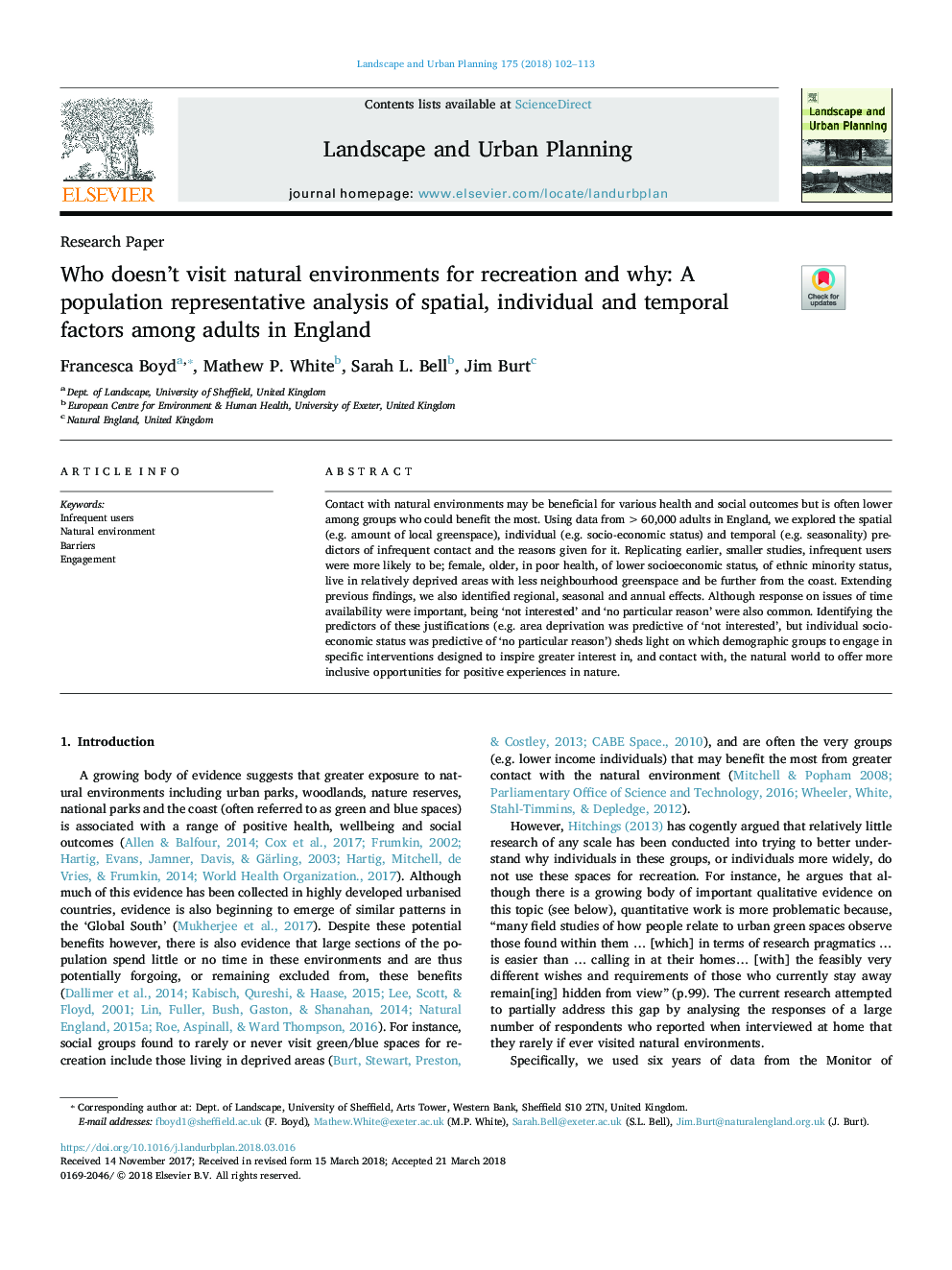| Article ID | Journal | Published Year | Pages | File Type |
|---|---|---|---|---|
| 7459772 | Landscape and Urban Planning | 2018 | 12 Pages |
Abstract
Contact with natural environments may be beneficial for various health and social outcomes but is often lower among groups who could benefit the most. Using data from >60,000 adults in England, we explored the spatial (e.g. amount of local greenspace), individual (e.g. socio-economic status) and temporal (e.g. seasonality) predictors of infrequent contact and the reasons given for it. Replicating earlier, smaller studies, infrequent users were more likely to be; female, older, in poor health, of lower socioeconomic status, of ethnic minority status, live in relatively deprived areas with less neighbourhood greenspace and be further from the coast. Extending previous findings, we also identified regional, seasonal and annual effects. Although response on issues of time availability were important, being 'not interested' and 'no particular reason' were also common. Identifying the predictors of these justifications (e.g. area deprivation was predictive of 'not interested', but individual socioeconomic status was predictive of 'no particular reason') sheds light on which demographic groups to engage in specific interventions designed to inspire greater interest in, and contact with, the natural world to offer more inclusive opportunities for positive experiences in nature.
Related Topics
Life Sciences
Agricultural and Biological Sciences
Ecology, Evolution, Behavior and Systematics
Authors
Francesca Boyd, Mathew P. White, Sarah L. Bell, Jim Burt,
